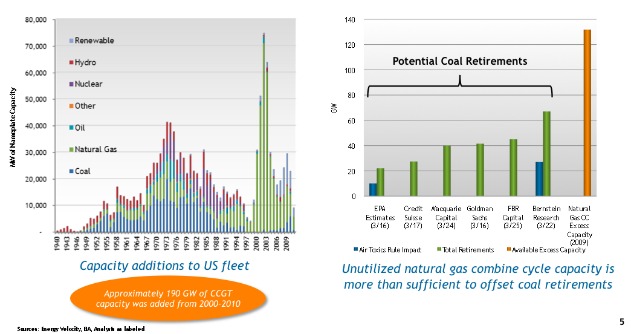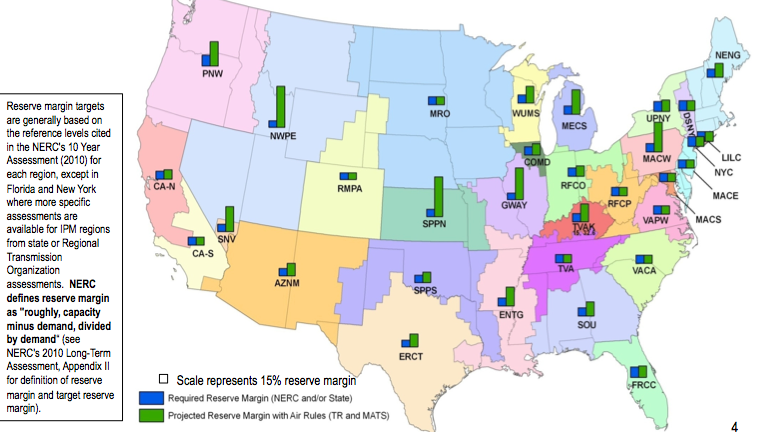Cross-posted from Climate Progress.
One of the biggest targets for GOP presidential candidates this year is the EPA. Any new regulation of mercury or air toxics from power plants has gotten conservatives up in arms, with leading candidates claiming the EPA “monitors the economy,” is “anti-business,” and should be renamed “the Job-Killing Organization of America.”
That strong rhetoric is largely in reaction to proposed rules that will lower the amount of mercury, arsenic, lead, and air toxics that power producers are allowed to emit. Those rules, which have been in the making for over a decade, have come under fire from congressional Republicans and presidential hopefuls, who say they’ll hurt businesses and destroy jobs.
The real impact of the last 40 years of EPA regulations? No economic collapse, no mass layoffs, no spikes in electricity prices. According to EPA figures, since the early ’70s when the organization started enforcing regulations to clean up water and air around the country, the six common pollutants (ozone, particulate matter, carbon monoxide, nitrogen oxides, sulfur dioxide, and lead) have dropped nearly 63 percent, while GDP has grown over 200 percent:
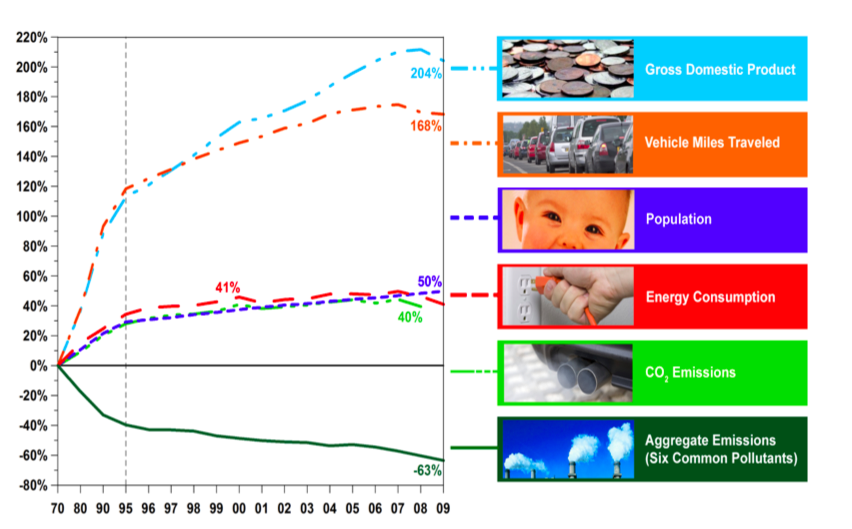
And will such rules cause energy prices to skyrocket? According to projections from the Energy Information Administration (EIA), the regulations will not cause a substantial increase in electricity prices:
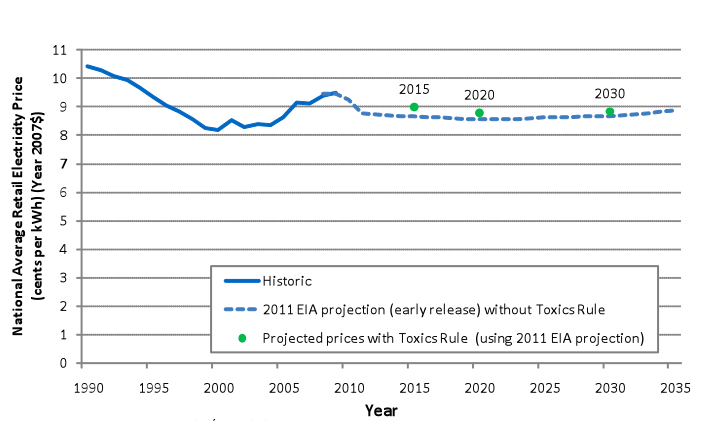
Still, a number of coal-intensive utilities are fighting the proposed regulations, saying that the three-year time frame for implementing the rules is too short. In moderating an event Tuesday at the Center for American Progress (CAP) on the economic impact of the EPA regulations (which you can watch here), former EPA Administrator and current CAP Distinguished Senior Fellow Carol Browner reminded everyone that the process has been ongoing for a long time:
These rules have been in the works for 10 years. Companies have known for a very long time that action was going to be taken on mercury. This can be done in a common-sense, cost-effective way.
In fact, data collected from EPA and presented by America’s largest independent power producer, Calpine, show that electricity providers are far more prepared for changes to air-toxic standards than some companies in the industry admit:
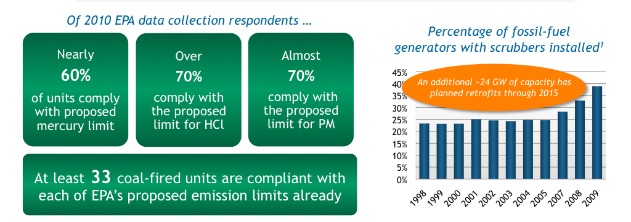
Calpine has invested heavily in natural gas and renewable energy, so it is far more supportive of the regulations than many coal-dependent utilities and power providers. As part of the Clean Energy Group, a coalition of forward-thinking power providers that support high environmental standards and renewable energy, the company is out to prove that the power sector can easily meet new rules without damaging the economy or dismantling the power system. Thad Miller, the executive vice president of Calpine, says the company saw regulations coming far ahead of time:
As American companies, we’re all in this to make money. And we asked: ‘How can we make money while also investing in a sustainable future?’ The time is here for change and the changes are going to happen either way.
Browner seconded his comments: “There are leaders and there are followers. Thank God there are leaders who can prove this can be done.”
The goal of the mercury and air toxics rules would be to encourage power providers to install scrubber technologies and more efficient boilers, while also phasing out some legacy coal plants that may be too old and dirty to justify installing new equipment. According to Calpine, any coal-plant retirements that are planned over the next decade can be easily met by existing natural gas capacity — another reason why prices won’t rise substantially under new air toxics rules.
The North American Reliability Corporation also backs that analysis up, showing that targeted reserve margins will be sufficiently met through 2015 with EPA air rules in place:
And what about new power plant regulations being “job killers”? With more power plants making retrofits, more people will be needed for construction and operations jobs. Although the cost of those jobs will be absorbed into the system, the previously mentioned EIA projections don’t show them having a major impact on electricity prices. The figures for job creation are across the board. Ceres, a coalition of investors and corporations focused on sustainability, projects [PDF] 290,000 jobs on average over the next five years — but those figures seem extraordinarily high given that many power plants are already equipped to meet the rules. The more grounded EPA projections put short-term jobs at 31,000 and long-term jobs at 9,000.
“These are not insubstantial numbers, and they are conservative,” explained EPA’s Deputy Administrator Bob Perciasepe:
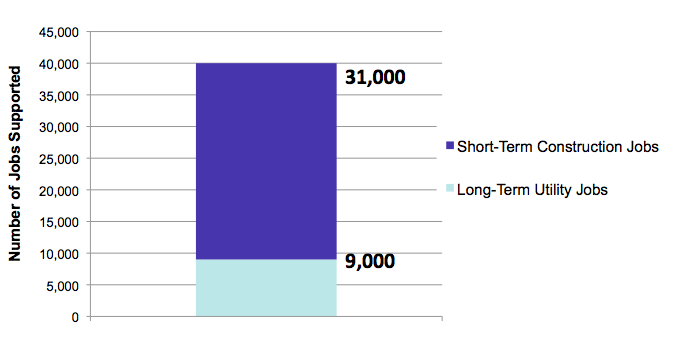
Calling environmental reforms “anti-business” is good for exciting a political base during the campaign season, but it doesn’t match reality. As history has shown, cleaning up the environment is consistent with economic prosperity and business ingenuity, not counter to it.
Ceres President Mindy Lubber summed up her presentation well: “I look forward to the day when these issues are not partisan. They are about jobs, they are about the economy, and they are about our environment.”


